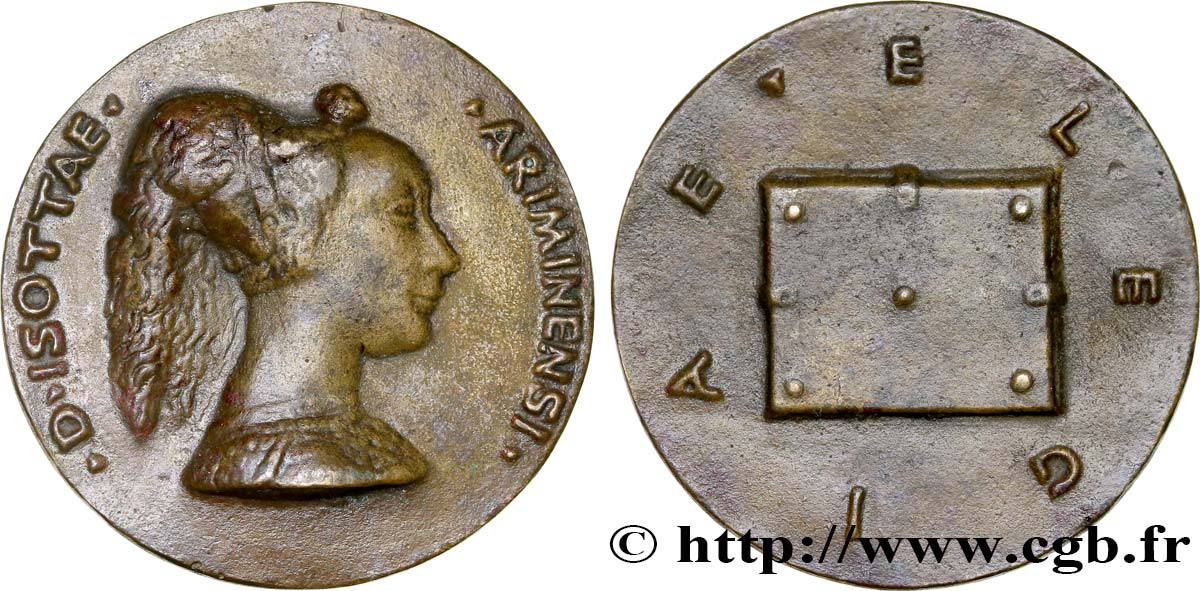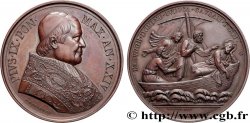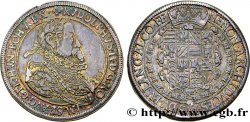Sie müssen angeschlossen sein und von cgb.fr genehmigt werden, um in einer E-Auktion teilzunehmen.Melden Sie sich an, um zu wetten..Die Kontobestätigungen sind innerhalb von 48 Stunden nach Ihrer Anmeldung gemacht.Warten Sie nicht bis die letzten zwei Tage vor dem Abschluss eines Verkaufs, um Ihre Registrierung abzuschließen. Klickend "BIETEN" verpflichten Sie sich vertraglich, diesen Artikel zu kaufen und Sie nehmen ohne Reserve die allgemeinen Verkaufsbedingungen für den live auctions zu cgb.fr an.
Der Verkauf wird an der Zeit auf der Übersichtsseite angezeigt geschlossen werden. Angebote, die nach der Schließung Zeit empfangen sind, werden nicht gültig.
Bitte beachten Sie, dass die Fristen für die Einreichung Ihres Angebots auf unsere Server können variieren und es kann zur Ablehnung Ihres Angebots entstehen, wenn es in den letzten Sekunden des Verkaufs gesendet wird. Die Angebote sollen mit ganzer Zahl ausgeführt sein, Sie können Kommas oder des Punktes in Ihrem Angebot nicht erfassen. Bei Fragen klicken Sie hier, um einen Blick auf die FAQ Live-Auktionen.
Alle Gewinngebote unterliegen einem Aufschlag von 18 % für Verkaufskosten.
Alle Gewinngebote unterliegen einem Aufschlag von 18 % für Verkaufskosten.
| Schätzung : | 400 € |
| Preis : | Kein Gebot |
| Höchstgebot : | Kein Gebot |
| Verkaufsende : | 24 Oktober 2023 19:02:29 |
Type : Médaille, Isotta degli Atti
Datum: 1446
Name der Münzstätte / Stadt : Italie
Metall : Bronze
Durchmesser : 40 mm
Stempelstellung : 12 h.
Graveur DE PASTI Matteo (1420-1468)
Gewicht : 34,5 g.
Rand lisse
Kommentare zum Erhaltungszustand:
Médaille postérieure, de 2 mm plus étroite, avec une belle apparence et une patine sombre
Vorderseite
Titulatur der Vorderseite D’ISOTTAE - ARIMINENSI.
Beschreibung Vorderseite Buste à droit de Isotta degli Atti.
Rückseite
Titulatur der Rückseite ELEGIAE.
Beschreibung Rückseite Reliure de livre.
Kommentare
Isotta degli Atti (née v. 1432 à Rimini et morte en 1474) est une noble italienne du XVe siècle. Elle fut la troisième épouse de Sigismond Malatesta. Elle est la fille de Francesco degli Atti, famille de riches marchands de Sassoferrato de la région des Marches. Elle fut présentée à Sigismond Malatesta alors qu'elle avait douze ou treize ans. Elle devint rapidement son amante et lui donna un fils en 1447 nommé Jean qui décéda quelques mois après. Après la mort de Polyxène Sforza, la deuxième épouse, en 1449, le mariage est célébré en 1456. Alors que les mariages précédant étaient infiniment politiques, celui-ci semble différent.
Matteo de' Pasti (Vérone, 1420 (?) - Rimini, 1468) est un médailleur, sculpteur et enlumineur italien du XVe siècle.
Il a été l'un des meilleurs médailleurs du Quattrocento (XVe siècle italien). Il a collaboré avec Giorgio d'Alemagna à Vérone, et à Ferrare à un bréviaire pour Lionel d'Este en 1445-1446. Il a rencontré Pisanello et le suivit en 1446 à Rimini où il effectua quelques-unes parmi ses plus fines médailles pour les plus illustres personnalités du temps (Sigismond Malatesta, Isotta degli Atti, Guarino Veronese, Timoteo Maffei et Leon Battista Alberti)..
Isotta degli Atti (born v. 1432 in Rimini and died in 1474) is an Italian noblewoman of the 15th century. She was the third wife of Sigismund Malatesta. She is the daughter of Francesco degli Atti, a wealthy merchant family from Sassoferrato in the Marche region.. She was introduced to Sigismund Malatesta when she was twelve or thirteen years old.. She quickly became his lover and bore him a son in 1447 named John who died a few months later. After the death of Polyxena Sforza, the second wife, in 1449, the marriage was celebrated in 1456. While previous marriages were endlessly political, this one seems different..
Matteo de' Pasti (Verona, 1420 (?) - Rimini, 1468) was an Italian medalist, sculptor and illuminator of the 15th century..
He was one of the best medalists of the Quattrocento (15th century Italy). He collaborated with Giorgio d'Alemagna in Verona, and in Ferrara on a breviary for Lionel d'Este in 1445-1446. He met Pisanello and followed him in 1446 to Rimini where he made some of his finest medals for the most illustrious personalities of the time (Sigismund Malatesta, Isotta degli Atti, Guarino Veronese, Timoteo Maffei and Leon Battista Alberti).
Matteo de' Pasti (Vérone, 1420 (?) - Rimini, 1468) est un médailleur, sculpteur et enlumineur italien du XVe siècle.
Il a été l'un des meilleurs médailleurs du Quattrocento (XVe siècle italien). Il a collaboré avec Giorgio d'Alemagna à Vérone, et à Ferrare à un bréviaire pour Lionel d'Este en 1445-1446. Il a rencontré Pisanello et le suivit en 1446 à Rimini où il effectua quelques-unes parmi ses plus fines médailles pour les plus illustres personnalités du temps (Sigismond Malatesta, Isotta degli Atti, Guarino Veronese, Timoteo Maffei et Leon Battista Alberti)..
Isotta degli Atti (born v. 1432 in Rimini and died in 1474) is an Italian noblewoman of the 15th century. She was the third wife of Sigismund Malatesta. She is the daughter of Francesco degli Atti, a wealthy merchant family from Sassoferrato in the Marche region.. She was introduced to Sigismund Malatesta when she was twelve or thirteen years old.. She quickly became his lover and bore him a son in 1447 named John who died a few months later. After the death of Polyxena Sforza, the second wife, in 1449, the marriage was celebrated in 1456. While previous marriages were endlessly political, this one seems different..
Matteo de' Pasti (Verona, 1420 (?) - Rimini, 1468) was an Italian medalist, sculptor and illuminator of the 15th century..
He was one of the best medalists of the Quattrocento (15th century Italy). He collaborated with Giorgio d'Alemagna in Verona, and in Ferrara on a breviary for Lionel d'Este in 1445-1446. He met Pisanello and followed him in 1446 to Rimini where he made some of his finest medals for the most illustrious personalities of the time (Sigismund Malatesta, Isotta degli Atti, Guarino Veronese, Timoteo Maffei and Leon Battista Alberti).








 Berichten über einen Fehler
Berichten über einen Fehler Die Seite drucken
Die Seite drucken Teilen meiner Auswahl
Teilen meiner Auswahl Stellen Sie eine Frage
Stellen Sie eine Frage Einlieferung/Verkauf
Einlieferung/Verkauf
 Details
Details















